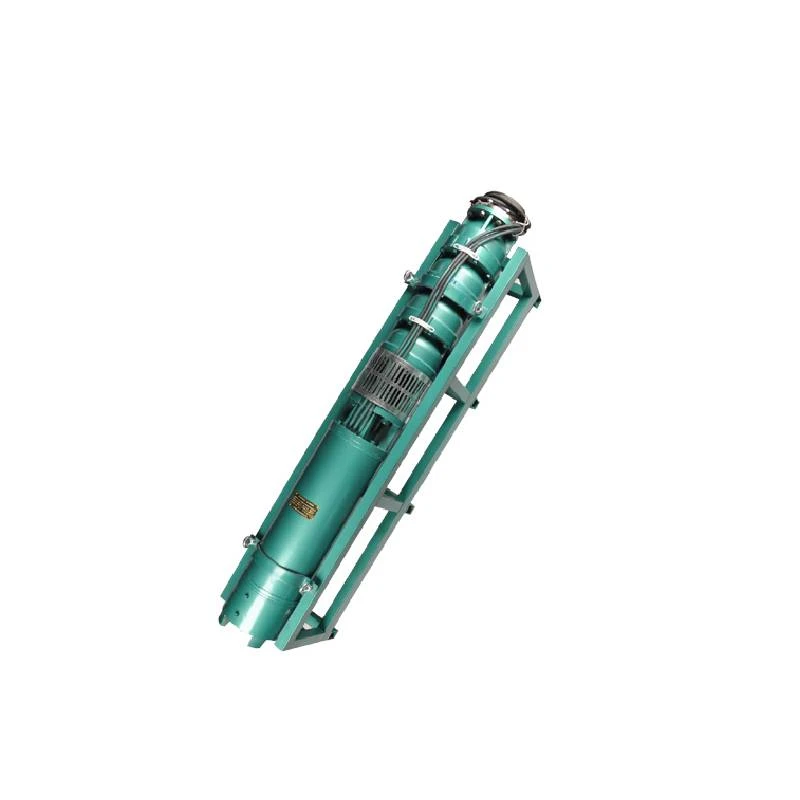Nov . 22, 2024 05:25 Back to list
well submersible pumps
Well Submersible Pumps An Overview of Functionality and Applications
Well submersible pumps are essential devices used in the extraction of water from deep underground sources. Unlike traditional pumps that operate at the surface of a water body, submersible pumps are designed to work while fully submerged in water. They are vital for various applications, including agricultural irrigation, residential water supply, and industrial processes. This article explores the functionality, types, advantages, and considerations of well submersible pumps.
Functionality of Well Submersible Pumps
A well submersible pump consists of a motor and a pump head that are housed within a single unit. The motor is typically located at the bottom of the pump, which helps push water up through a vertical column and into a discharge pipe. The pump is sealed to prevent water from entering the motor casing, thereby protecting it from damage and ensuring durability.
The operation of a submersible pump follows a straightforward principle when the motor is activated, it spins the impellers located within the pump. These impellers create a centrifugal force, which moves water through the system. The design of submersible pumps allows for a high efficiency in lifting water from significant depths, making them particularly suitable for deep wells where other types of pumps may struggle to function effectively.
Types of Well Submersible Pumps
Well submersible pumps can be categorized based on several factors, including their design, materials, and specific applications
1. Vertical Multi-Stage Pumps These pumps feature multiple impellers and are capable of delivering high pressure. They are often used in situations where water needs to be lifted over long distances or to significant heights.
2. Single-Stage Pumps These are simpler in design and are typically used in shallow wells, where less pressure is required. They are ideal for residential use and small-scale applications.
3. Material Variations Submersible pumps can be constructed from various materials, such as stainless steel, thermoplastic, or cast iron. The choice of material depends on the nature of the water and environmental conditions, with stainless steel offering enhanced corrosion resistance.
Advantages of Using Submersible Pumps
There are several advantages to using well submersible pumps
well submersible pumps

1. Efficiency Submersible pumps are known for their high efficiency in moving water from great depths. They can operate continuously without overheating, making them suitable for long-term use.
2. Quiet Operation As these pumps are submerged in water, they tend to operate more quietly than surface pumps, which can be beneficial in residential or urban settings.
3. Space-Saving Design The compact design of submersible pumps ensures that they take up less surface space, allowing for a more streamlined installation in wells.
4. Reduced Risk of Cavitation Being submerged in water helps to prevent cavitation, a condition that can damage pumps. This increases the operational lifespan of the equipment.
Considerations When Choosing a Submersible Pump
When selecting a well submersible pump, several factors must be considered to ensure optimal performance
1. Well Depth It’s crucial to know the depth of the well, as this will influence the required pump capacity and power.
2. Water Quality The presence of sediments, chemicals, or other materials in the water can affect pump choice. Selecting a pump constructed from appropriate materials can mitigate corrosion and damage.
3. Flow Rate and Pressure Needs Determine the required flow rate and pressure for your intended application. Different pumps have varying capacities, and it’s essential to choose one that meets your specific needs.
4. Power Supply Ensure that your energy source matches the pump's voltage and phase requirements, as well as considering the availability of a backup power source in case of outages.
In conclusion, well submersible pumps are a critical component in modern water extraction systems. Their ability to efficiently and quietly lift water from significant depths makes them indispensable in various applications, from agriculture to residential use. By understanding their functionality, advantages, and the factors to consider when selecting a pump, users can make informed decisions that enhance water accessibility and management. Whether for irrigation, domestic use, or industrial applications, submersible pumps provide a reliable solution for water extraction needs.
-
Submersible Water Pump: The Efficient 'Power Pioneer' of the Underwater World
NewsJul.01,2025
-
Submersible Pond Pump: The Hidden Guardian of Water Landscape Ecology
NewsJul.01,2025
-
Stainless Well Pump: A Reliable and Durable Pumping Main Force
NewsJul.01,2025
-
Stainless Steel Submersible Pump: An Efficient and Versatile Tool for Underwater Operations
NewsJul.01,2025
-
Deep Well Submersible Pump: An Efficient 'Sucker' of Groundwater Sources
NewsJul.01,2025
-
Deep Water Well Pump: An Efficient 'Sucker' of Groundwater Sources
NewsJul.01,2025
-
 Submersible Water Pump: The Efficient 'Power Pioneer' of the Underwater WorldIn the field of hydraulic equipment, the Submersible Water Pump has become the core equipment for underwater operations and water resource transportation due to its unique design and excellent performance.Detail
Submersible Water Pump: The Efficient 'Power Pioneer' of the Underwater WorldIn the field of hydraulic equipment, the Submersible Water Pump has become the core equipment for underwater operations and water resource transportation due to its unique design and excellent performance.Detail -
 Submersible Pond Pump: The Hidden Guardian of Water Landscape EcologyIn courtyard landscapes, ecological ponds, and even small-scale water conservancy projects, there is a silent yet indispensable equipment - the Submersible Pond Pump.Detail
Submersible Pond Pump: The Hidden Guardian of Water Landscape EcologyIn courtyard landscapes, ecological ponds, and even small-scale water conservancy projects, there is a silent yet indispensable equipment - the Submersible Pond Pump.Detail -
 Stainless Well Pump: A Reliable and Durable Pumping Main ForceIn the field of water resource transportation, Stainless Well Pump has become the core equipment for various pumping scenarios with its excellent performance and reliable quality.Detail
Stainless Well Pump: A Reliable and Durable Pumping Main ForceIn the field of water resource transportation, Stainless Well Pump has become the core equipment for various pumping scenarios with its excellent performance and reliable quality.Detail
